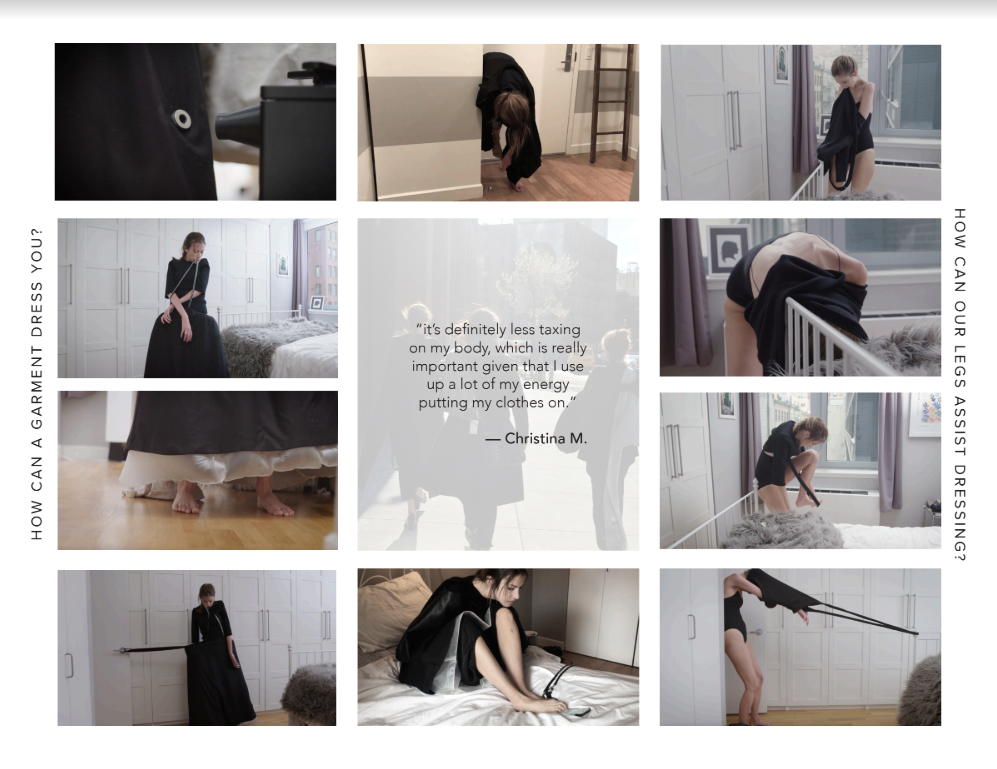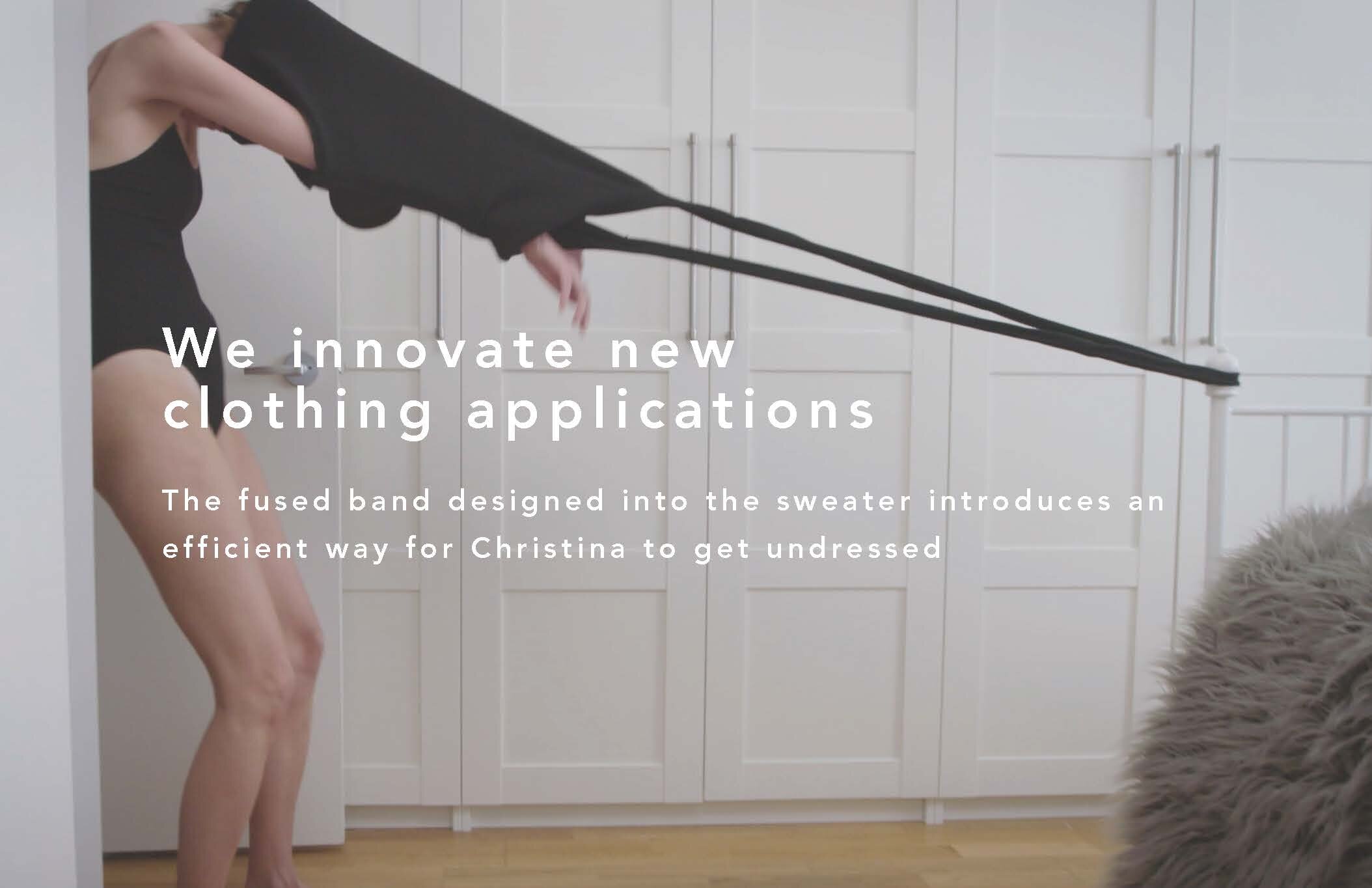Independent Dressing: An Interview with Cair Collective
Many of us take the physicality of dressing for granted, being able to purchase, clean, and wear clothing with relative ease. All of these everyday practices can prove to be challenging or impossible for people living with physical disabilities, for whom it is exceptionally difficult to find functional clothing that fits their personal style. Even without lifelong disabilities, any person can experience serious challenges with the simple act of getting dressed due to temporary injuries or the natural impediments that come with advanced age. With so many people in need of clothing that can cater to different levels of physical abilities, why does this segment of the market continue to be largely ignored by the fashion industry?
Like many of the challenges associated with inclusive fashion, it starts with a lack of education. Adaptive fashion — clothing that is specifically designed for those with chronic conditions and disabilities — has yet to become a standard part of the design curriculum at most universities. This approach requires a specialized knowledge of medical conditions and the specific requirements for clothing construction that are needed to address these conditions, which many instructors aren’t equipped to provide. Such obstacles speak to the importance of groups like the Open Style Lab, which has worked with Parsons School of Design since 2014 by pairing students with people with various disabilities in order to provide emerging designers with a first-hand knowledge of what’s really needed from adaptive fashion.
Amy Yu Chen and Claudia Poh, winners of the 2018 Parsons Social Innovation Award and the AARP x Parsons Award, founded a design firm called Cair Collective through their work with the Open Style Lab. In 2017, Amy was a student in one of my Parsons classes called Advanced Research Seminar. In this course, students pursue a semester-long research project based upon the subject of their choice. Amy researched the history of the ready-to-wear industry, looking at how clothing first became mass-produced and standardized rather than being tailored to fit particular bodies and needs. She went on to challenge the foundations of the ready-to-wear industry through her thesis work, asking a central question that serves the ethos of Cair Collective: what if our clothes could do more for us and for our bodies?
Here, in their own words, Amy and Claudia discuss the impetus for their project and what they hope to achieve in the future.
[Editor’s Note: this interview was conducted in 2019 and has been edited for clarity. Due to COVID-19 and other factors, Cair Collective is currently on pause.]
IntervieW
Cair Collective started as a thesis project in our senior year at Parsons School of Design [class of 2018] as a way to reimagine dressing experiences in apparel while applying inclusive design principles. The collection started when our friend Christina Mallon asked us to add two long straps to her existing pants that would allow her to don and doff her pants independently. Christina experiences paralysis in her arms and has taught herself to use her feet as her hands over the last nine years. Developing an alternate clothing system that reduces the amount of energy required for dressing would save Christina energy to complete other tasks in her daily life.
The notion of independent dressing was heavily influenced by Christina’s lifestyle. Christina walked us through her existing wardrobe and we learned that she had only worn 20% of her wardrobe, 15% of which she could put on independently. This reinforced the fact that traditional modes of dress, which heavily rely on the use of one’s hands, aren’t able to meet the needs of all people.
Gripping and unfastening garments are typically our very first steps in our dressing processes and are very instinctual; however, we recognized that we don’t necessarily retain the same degree of dexterity as we age, or as we experience injuries, and so this issue extends beyond those with physical disabilities. Therefore, Cair Collective designs dressing processes that prompt us to put aside our assumptions about our current system of dress. We ideate solutions around the human condition that go beyond a single user.
Consider a paradigm where air is used as a means of getting dressed. We’ve created garments that go against gravity and apply themselves onto the body to create an automatic dressing experience. For example, our dress prototype allows the user to attach the garment to the air pump via a magnet and then inflates the garment to clothe the body. Lastly, cinching the garment to the waist via a doorknob is made possible through an elastic drawstring with an in-built silicone stopper. To take it off, the garment deflates and drapes on the body seamlessly.
This mode of dressing may seem bizarre, but in other fields we are looking at similar concepts such as the self-driving car and virtual assistants like Amazon’s Alexa. Cair Collective is our first step towards applying these concepts to create new possibilities in fashion.
We relied heavily on primary research to develop our prototypes. This included filming and working closely with Christina throughout her day. As a result, we learned of certain hacks that Christina had already implemented in her everyday life, which was extremely helpful in helping us understand ways to maximize her mobility and dexterity.
One such example includes the addition of long loops onto zippers in order for Christina to unzip her jacket using her feet. This motion later triggered a similar idea of designing a band into the hem of a fitted t-shirt, as it often gets caught above the chest. The band is aligned along the hem and acts as an extended loop for Christina to reach with her toes. We’ve also built in bra cups, to combine steps within Christina’s system of dress.
Through working closely with Christina, we learned that she types with her toes whilst she’s at work and therefore pants are preferable for these movements. However, while we learned that skirts and dresses are easier for her to don, it compromised her modesty at her work space.
In place of a basic pant construction, we considered how the crotch inseam was what made it difficult in the donning and doffing of pants. From this, we proposed a new typology, introducing a base with two leg holes. This combines the ease in donning skirts and the modesty offered in wearing pants.
In addition, Christina had shared that her arms were the most sensitive part of her body due to the atrophy. As a result, her sensitivity to the cold is heightened in the winter. There is also a tendency for her arms to fall out of their socket as they hang off to the side. We introduced a coat that serves as an arm-brace whilst holding her arms in place.
The education we received in different pathways (Collection and Systems & Society) at Parsons encouraged us to look beyond designing a collection that would only address Christina’s specific needs. It prompted us to investigate alternative modes of dressing that would reach a larger demographic, however strange those alternatives might seem.
Going forward, Cair Collective is looking to develop a range of universal prototypes whilst working with focus groups. The process of designing universally allows us to address communities that have been traditionally marginalized by the fashion industry. We believe in a human-centric fashion future, where the concept of health would be embedded in the design process.
You can learn more about Cair Collective’s research and design process here.







